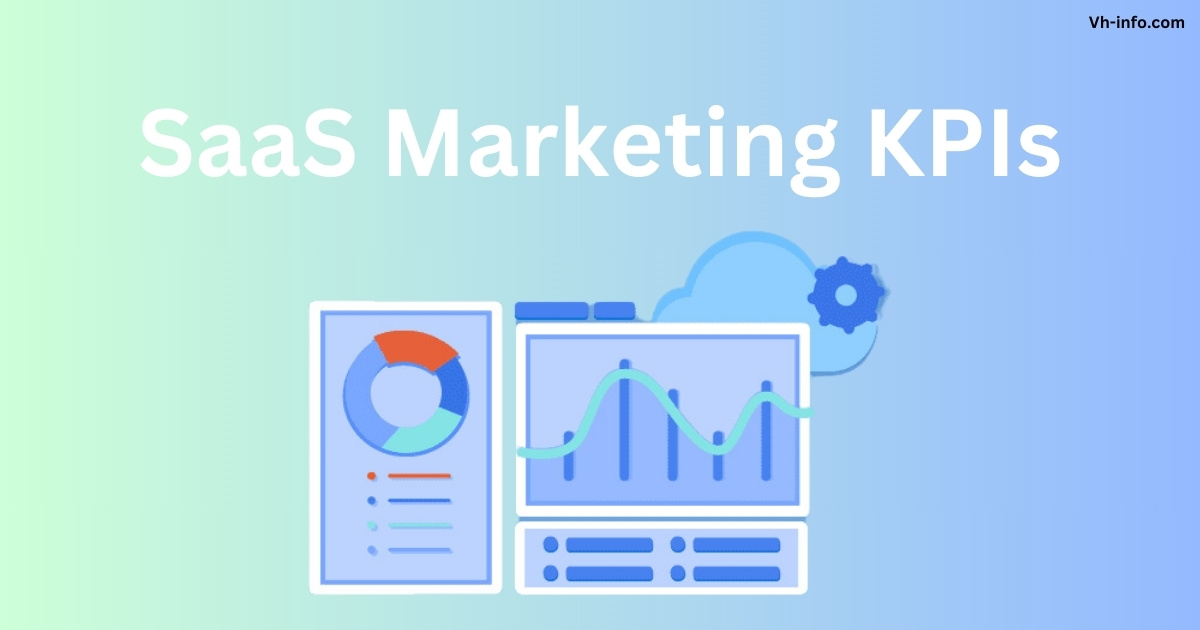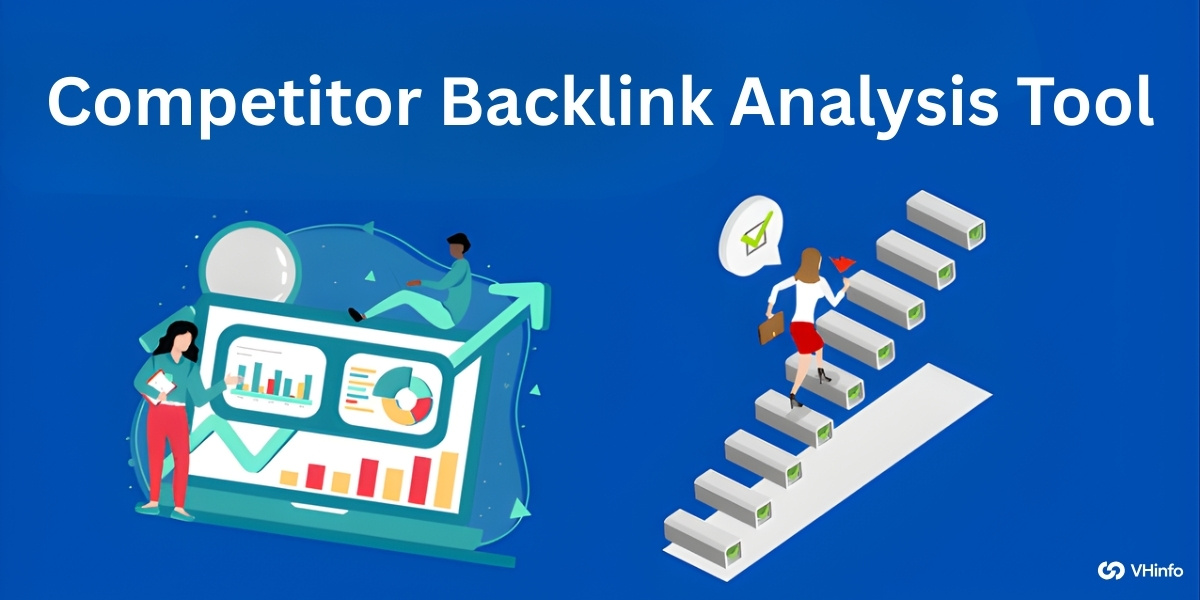As a SaaS company, tracking the right marketing KPIs is important for driving sustainable growth and optimizing your marketing efforts. With so many metrics to choose from, it can be overwhelming to determine which ones truly matter.
In this comprehensive guide, we’ll dive into the essential SaaS marketing KPIs you need to track, why they’re important, and how to leverage them to boost your business performance.
What Are SaaS Marketing KPIs?
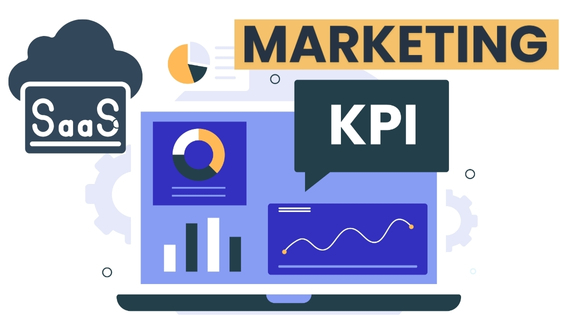
SaaS marketing KPIs (Key Performance Indicators) are measurable values that help you evaluate the effectiveness of your marketing strategies and campaigns. These metrics provide valuable insights into customer acquisition, average customer retention, average revenue growth, and overall marketing ROI.
KPIs to Track in B2B Saas Marketing
For B2B SaaS companies, some key marketing KPIs to focus on include:
- Lead generation and qualification metrics
- Sales funnel conversion rates
- Customer lifetime value (CLTV)
- Customer acquisition cost (CAC)
- Monthly recurring revenue (MRR) and annual recurring revenue (ARR)
Tracking these KPIs is important for developing an effective SaaS Marketing Plan that aligns with your business goals and target audience.
KPIs to Track in B2C Saas Marketing
B2C SaaS businesses should prioritize KPIs such as:
- Monthly active users (MAU)
- User engagement and retention rates
- Net promoter score (NPS)
- Customer churn rate
- Customer acquisition cost (CAC) to lifetime value (CLTV) ratio
Understanding these metrics can help you optimize your B2B SaaS Marketing strategies and improve customer satisfaction.
Top Essential SaaS Marketing KPIs to Track
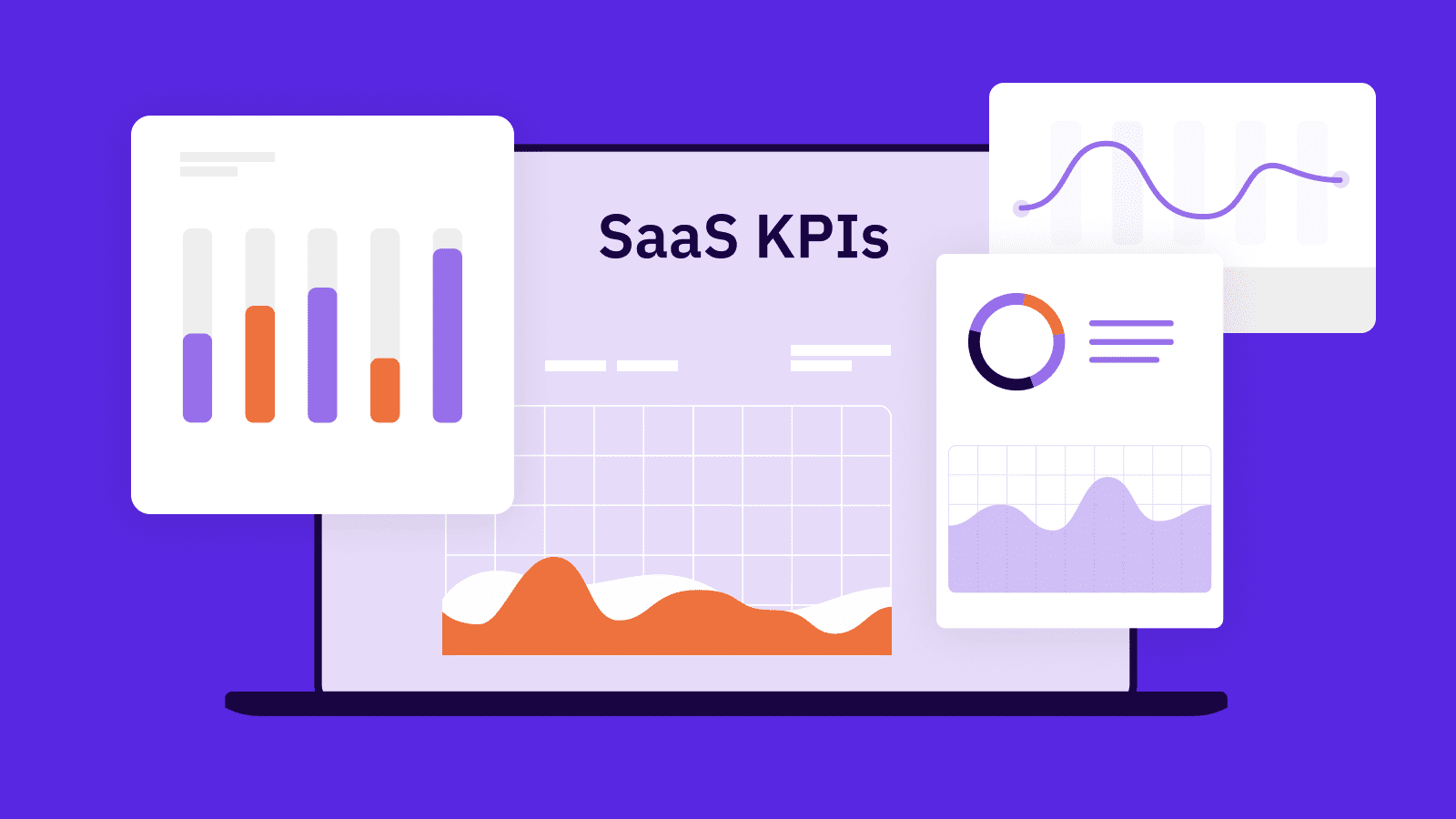
Let’s take a closer look at the most critical SaaS marketing KPIs you should be tracking:
- Monthly Recurring Revenue (MRR): MRR is the total predictable monthly revenue your SaaS business generates from subscriptions. Tracking MRR helps you forecast business growth, identify trends, and make data-driven decisions to optimize your revenue streams.
- Customer Acquisition Cost (CAC): CAC represents the average amount you spend to acquire a new customer. Monitoring CAC ratio can help you assess the efficiency of your marketing campaigns and make necessary adjustments to improve ROI.
- Customer Lifetime Value (CLTV): CLTV predicts the total revenue a customer will generate throughout their relationship with your SaaS business. Analyzing CLTV helps you make informed decisions about customer acquisition, retention, and resource allocation.
- Sales Qualified Leads (SQL): SQLs are leads that have been vetted by your digital marketing team and deemed ready for the sales team to engage. Tracking SQLs helps you measure the effectiveness of your lead generation and qualification processes.
- Churn Rate: Churn rate is the percentage of customers who cancel their subscriptions within a given time period. Monitoring revenue churn rate is essential for identifying issues in customer satisfaction, product-market fit, and overall business health.
- Lead Velocity Rate (LVR): LVR measures the growth of your qualified leads from month to month. This metric helps you predict future revenue growth and assess the impact of your lead generation efforts.
- Visitor to Lead Conversion Rate: This KPI tracks the percentage of website visitors who convert into leads by taking a desired action, such as filling out a form or signing up for a free trial. Optimizing your visitor to lead conversion rate is important for driving top-of-funnel growth.
- Lead to Customer Conversion Rate: The lead to customer conversion rate measures the percentage of qualified leads that become paying customers. Tracking this metric helps you identify opportunities to improve your sales process and increase revenue.
- Activation Rate: Activation rate is the percentage of users who complete a key action within your SaaS product, such as setting up their account or using a core feature. A high activation rate indicates that users are finding value in your product early on.
- Net Promoter Score (NPS): NPS is a customer satisfaction metric that measures how likely your customers are to recommend your SaaS product to others. Tracking NPS helps you gauge customer loyalty and identify areas for improvement in your product and customer experience.
- Monthly Active Users (MAU): MAU represents the number of unique users who engage with your SaaS product within a month. Monitoring MAU helps you understand user engagement, retention, and the overall health of your customer base.
- Annual Recurring Revenue (ARR): ARR is the total recurring revenue your SaaS business generates over a year. Tracking ARR helps you measure growth, set long-term goals, and make strategic decisions for your company.
Integrating these KPIs into your SaaS Marketing Metrics dashboard can provide a comprehensive view of your marketing performance and help you make data-driven decisions.
Why Are SaaS Marketing KPIs Important to Track?

Tracking SaaS marketing KPIs is essential for several reasons:
- Measuring Marketing Effectiveness: KPIs help you evaluate the performance of your marketing campaigns, channels, and strategies, allowing you to optimize your efforts for better results.
- Aligning Marketing With Business Goals: By tracking relevant KPIs, you can ensure that your marketing initiatives are contributing to overall business objectives, such as revenue growth and customer acquisition.
- Identifying Areas For Improvement: KPIs highlight strengths and weaknesses in your marketing approach, enabling you to make data-driven decisions to address issues and capitalize on opportunities.
- Forecasting Growth and Revenue: Monitoring KPIs like MRR, ARR, and LVR helps you predict future growth and revenue, allowing you to plan resources and investments accordingly.
- Communicating Marketing Impact: KPIs provide a clear, measurable way to demonstrate the value of your marketing efforts to stakeholders, investors, and other departments within your SaaS company.
Regularly tracking and analyzing your SaaS Marketing KPIs is important for making informed decisions and driving long-term success.
How to Track and Measure SaaS Marketing KPIs?

To effectively track and measure your SaaS marketing KPIs, follow these steps:
Setting Up Analytics and Reporting
- Identify the KPIs most relevant to your SaaS business and marketing goals.
- Implement analytics tools like Google Analytics, Mixpanel, or Kissmetrics to collect data.
- Set up dashboards and reports to visualize and monitor your KPIs regularly.
Analyzing and Acting on KPI Data
- Regularly review your KPI data to identify trends, patterns, and anomalies.
- Conduct in-depth analyses to uncover insights and opportunities for improvement.
- Use KPI insights to inform your marketing decisions, optimize campaigns, and allocate resources effectively.
- Continuously monitor and adjust your strategies based on KPI performance.
Leveraging SaaS SEO Tools can also help you track and analyze your marketing KPIs more efficiently.
How to Create the Proper SaaS Marketing KPIs?
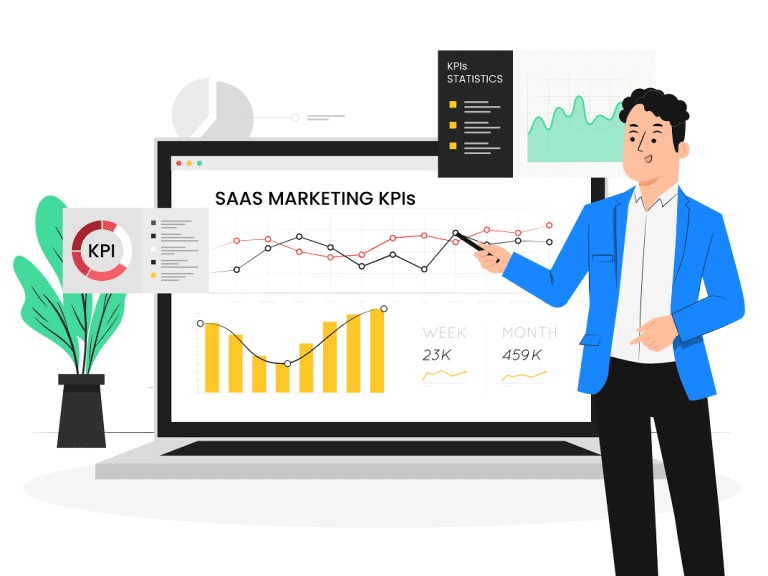
Creating effective SaaS marketing KPIs involves the following steps:
- Align With Business Objectives: Ensure your KPIs are directly tied to your overall business goals, such as increasing revenue, reducing churn, or improving customer satisfaction.
- Be Specific and Measurable: Define clear, quantifiable metrics that can be easily tracked and reported on.
- Set Realistic Targets: Establish achievable benchmarks based on historical data, industry standards, and your company’s growth stage.
- Focus on Actionable Insights: Choose KPIs that provide actionable information to help you make data-driven decisions and improve your marketing strategies.
- Regularly Review and Adjust: Continuously monitor your KPIs and be prepared to adapt them as your business evolves and new priorities emerge.
Are KPIs Enough to Determine the Actual Value of ROI?
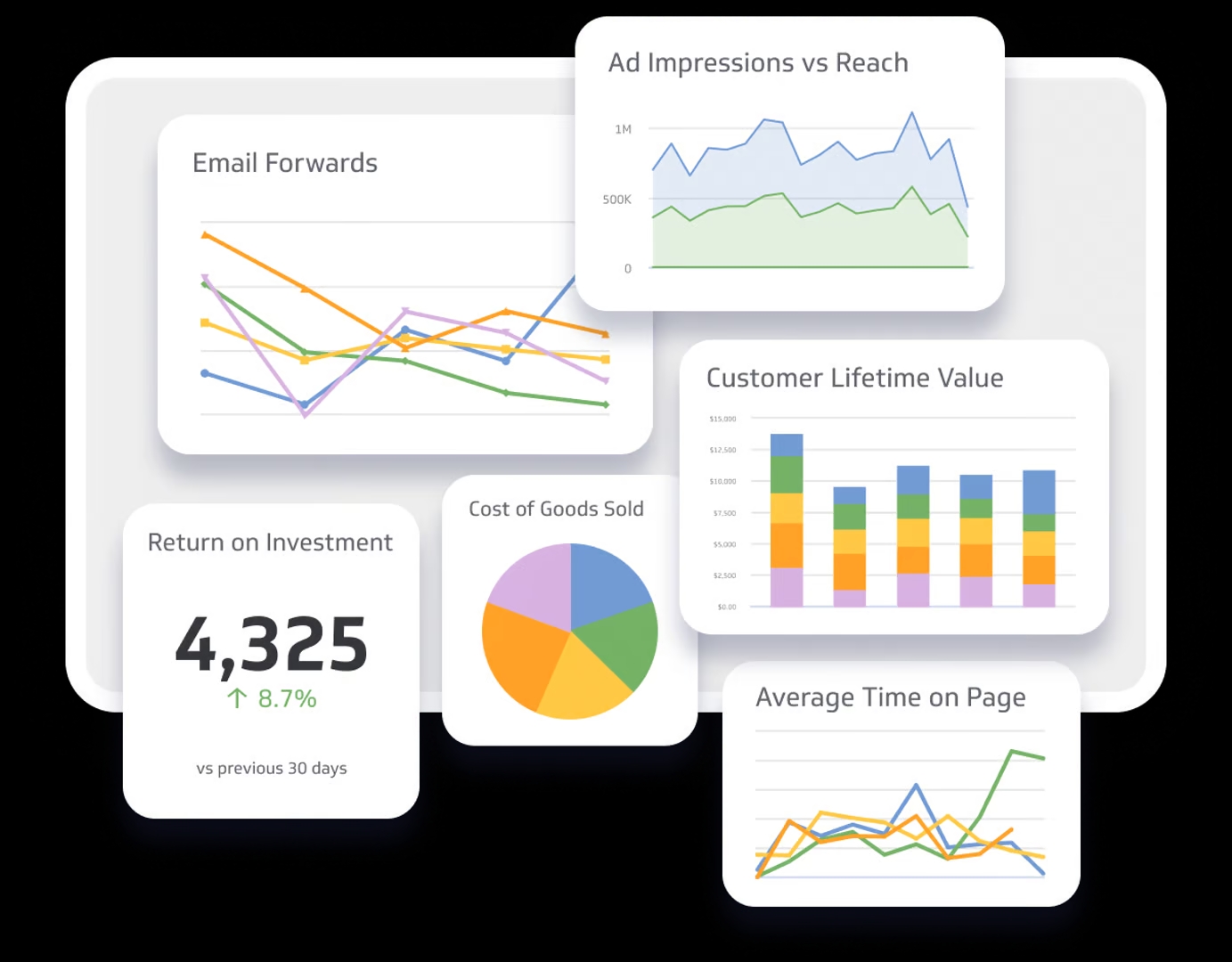
While KPIs are essential for measuring marketing performance, they may not always provide a complete picture of your ROI. To gain a more comprehensive understanding, consider categorizing your KPIs into primary and secondary metrics.
Primary KPIs
Primary KPIs directly impact revenue and bottom line growth. These include metrics like MRR, CLTV, and CAC. Focusing on primary KPIs helps you prioritize initiatives that have the greatest potential to drive ROI.
Secondary KPIs
Secondary KPIs are important for understanding the factors contributing to your primary KPIs. These may include metrics like website traffic, engagement rates, and conversion rates. While secondary KPIs may not directly tie to revenue, they provide valuable context for optimizing your marketing efforts and improving overall ROI.
Tools For Tracking Important SaaS Marketing Metrics
![]()
To streamline the process of tracking and analyzing your SaaS marketing metrics, consider using the following tools:
- Google Analytics: A free web analytics tool that helps you track website traffic, user behavior, and conversion rates.
- Mixpanel: A powerful analytics platform that specializes in tracking user interactions and engagement within your SaaS product.
- Kissmetrics: A customer engagement and marketing automation platform that helps you track and optimize the customer journey across multiple touchpoints.
- ChartMogul: A subscription analytics tool that helps you monitor and analyze key SaaS metrics like MRR, churn, and CLTV.
- HubSpot: An all-in-one marketing, sales, and customer service platform that offers robust analytics and reporting features for tracking KPIs.
Integrating these tools with your SaaS Marketing Automation workflows can help you gain deeper insights into your marketing performance.
Best Practices For Optimizing SaaS Marketing Performance
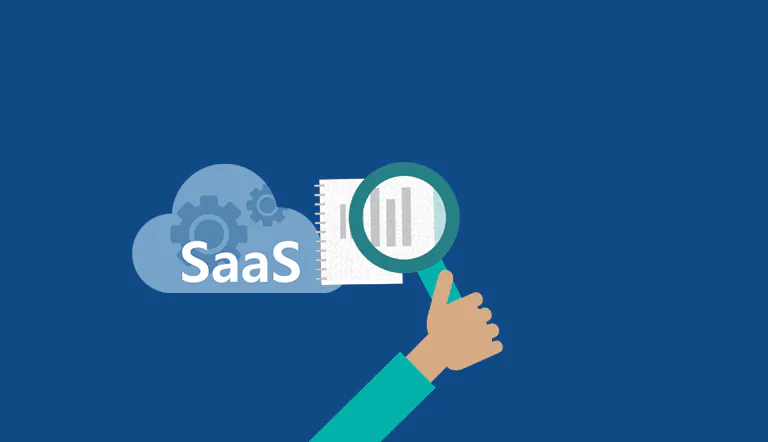
To maximize the impact of your SaaS marketing KPIs, follow these best practices:
- Aligning KPIs With Business Goals: Ensure that your marketing KPIs are closely aligned with your overall business objectives. This helps you prioritize initiatives that have the greatest potential to drive growth and profitability.
- Focusing on High-Impact Metrics: While it’s important to track a range of KPIs, focus your efforts on the metrics that have the most significant impact on your business. Prioritize KPIs that directly influence revenue, customer acquisition, and retention.
- Continuously Testing and Iterating: Use your KPI data to identify opportunities for improvement and optimize your marketing strategies. Continuously test new approaches, analyze the results, and iterate based on your findings to drive better performance over time.
Future Trends in SaaS Marketing KPIs
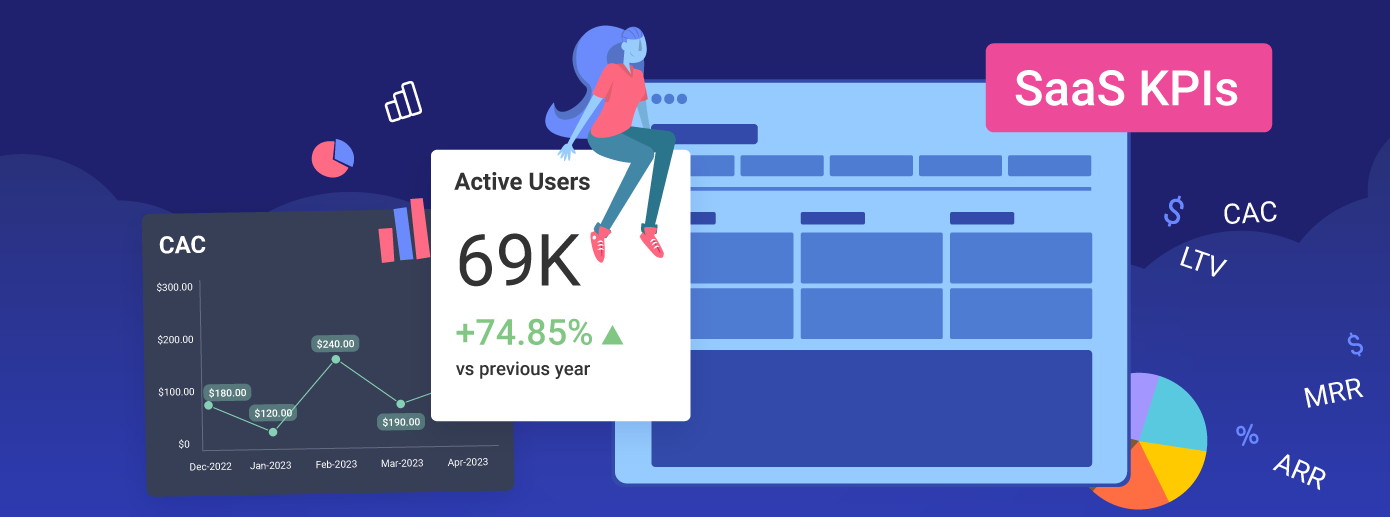
As the SaaS industry evolves, so do the KPIs that matter most. Some emerging trends to watch include:
- Customer Experience Metrics: Measuring and optimizing the end-to-end customer experience, from initial contact to long-term loyalty, will become increasingly important.
- Product Engagement Metrics: Tracking in-depth product usage and engagement metrics will help SaaS companies identify opportunities to improve user experience and reduce churn.
- Account-Based Marketing Metrics: As more SaaS businesses adopt account-based marketing strategies, KPIs that track engagement and conversion at the account level will gain prominence.
- Predictive Analytics: Leveraging AI and machine learning to predict customer behavior, churn risk, and lifetime value will help SaaS marketers proactively optimize their strategies.
FAQ’s:
How Often Should SaaS Marketing KPIs Be Reviewed?
SaaS marketing KPIs should be reviewed on a regular basis, typically monthly or quarterly, depending on the metric and your business’s growth stage. However, some KPIs, such as website traffic and conversion rates, may benefit from more frequent monitoring.
Can KPIs Differ Between Early-Stage and Mature SaaS Businesses?
Yes, the priority and relevance of certain KPIs may vary based on a SaaS company’s maturity level. For example, early-stage startups may focus more on user acquisition and activation, while established businesses may prioritize metrics like CLTV and net revenue retention.
What is a Good Benchmark For SaaS Customer Acquisition Cost?
A good benchmark for SaaS CAC varies by industry and target audience. However, a general rule of thumb is that your CLTV should be at least 3 times higher than your CAC. This ensures that you’re generating a healthy return on your customer acquisition investments.
How Do SaaS Companies Effectively Utilize Customer Feedback in KPIs?
SaaS companies can include customer feedback into their KPIs by tracking metrics like NPS, customer satisfaction score (CSAT), and customer effort score (CES). These metrics help identify areas for improvement in product development, customer support, and overall user experience.
What Other SaaS Metrics Should I Consider Tracking Besides Marketing KPIs?
In addition to marketing KPIs, SaaS businesses should also track metrics related to product performance, financial health, and operational efficiency. These may include metrics like user engagement, retention rate, gross margin, and customer support ticket resolution time.
Conclusion
Tracking the right SaaS marketing KPIs is essential for driving growth, optimizing your marketing efforts, and making data-driven decisions.
To understand your business performance better and pinpoint areas for enhancement, concentrate on important metrics such as MRR, CAC, CLTV, and churn rate. It is important to ensure that your KPIs are in line with your business objectives, consistently assess your data, and leverage insights to refine your marketing tactics continuously.
Tracking your SaaS marketing KPIs and adapting to emerging trends will enable you to drive sustainable growth and succeed in the competitive SaaS sector. If you’re looking for expert guidance on SaaS link building and SEO, VH-info is here to help. Our team specializes in helping SaaS companies improve their online visibility, drive organic traffic, and build high-quality backlinks.
Contact us today to learn more about our services and how we can help you achieve your growth objectives.
